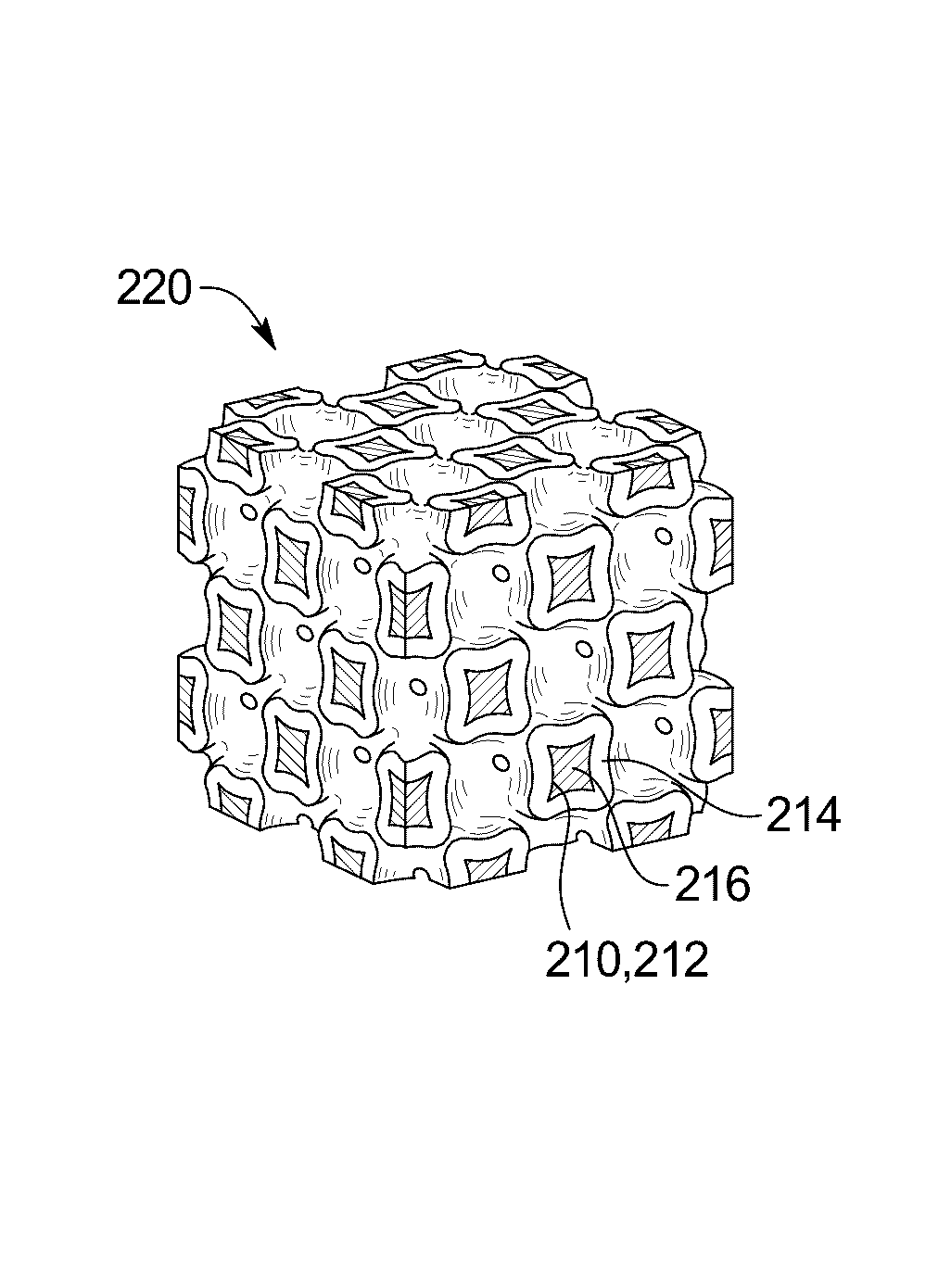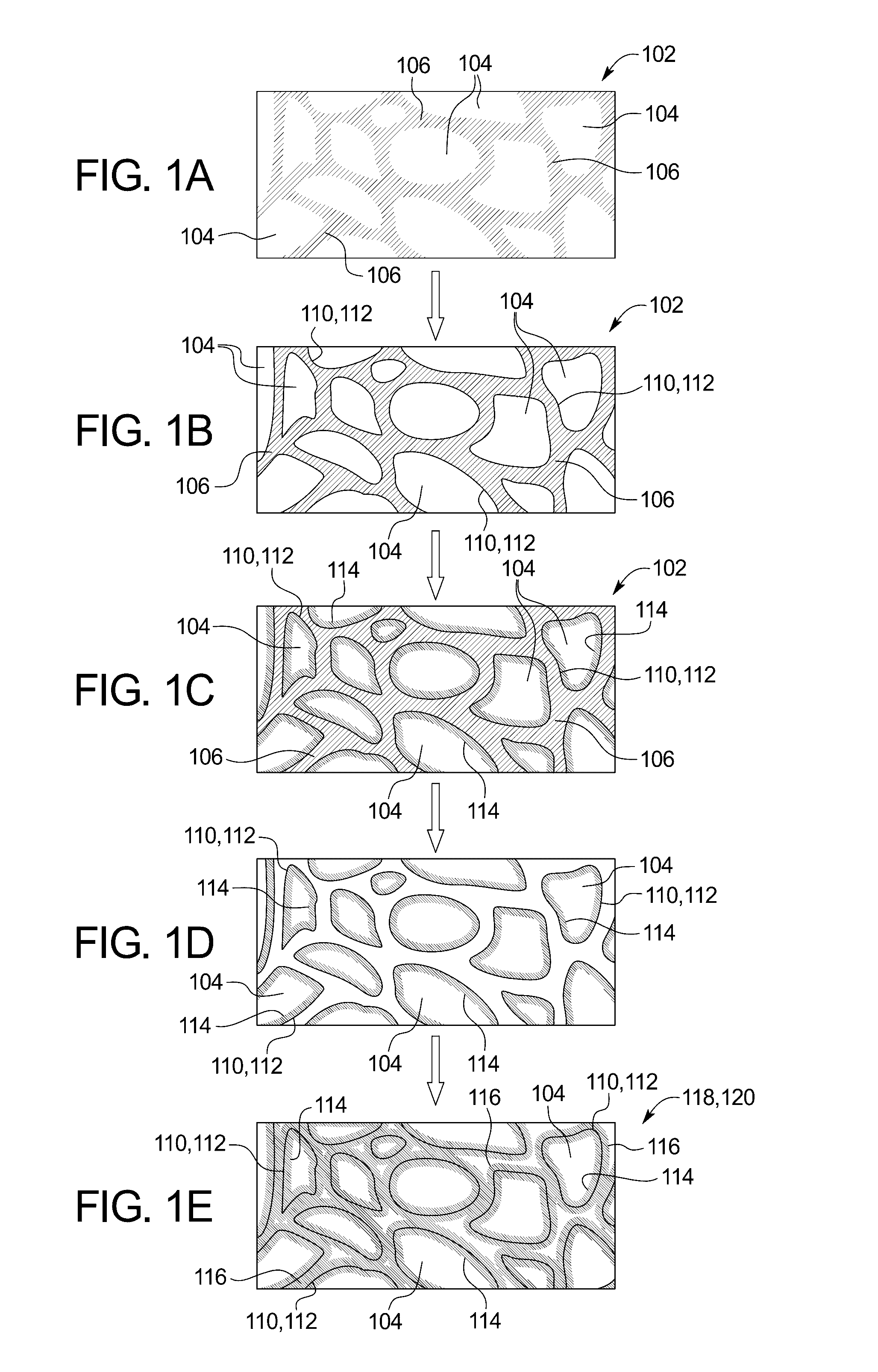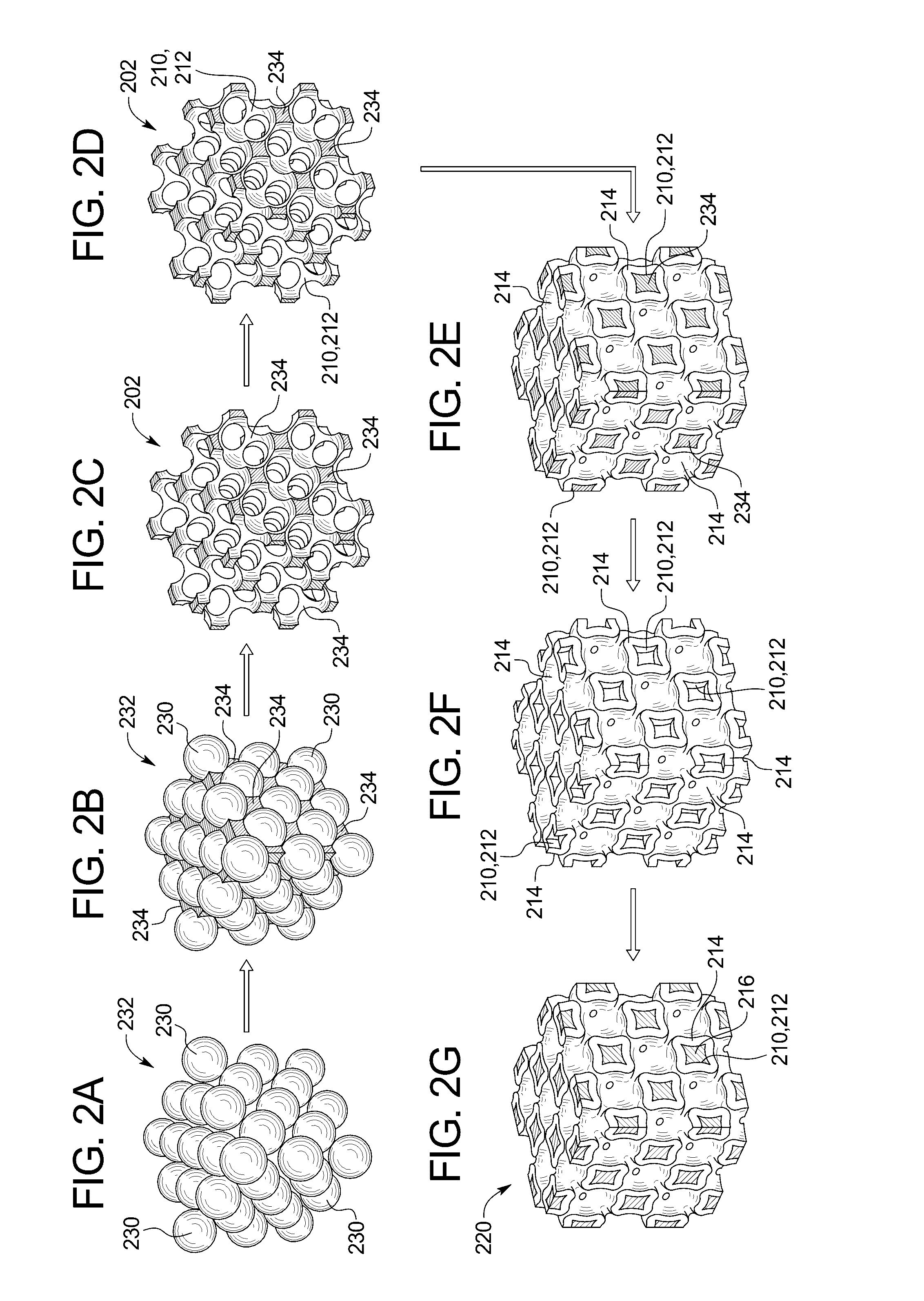Scaffold-free 3D porous electrode and method of making a scaffold-free 3D porous electrode
a porous electrode, scaffold-free technology, applied in the direction of electrode manufacturing process, cell components, electrochemical generators, etc., can solve the problems of low fraction of electrochemically active materials, low rate performance, and high metal mass
- Summary
- Abstract
- Description
- Claims
- Application Information
AI Technical Summary
Benefits of technology
Problems solved by technology
Method used
Image
Examples
examples
Fabrication of Scaffold-Free 3D Porous Cathode
[0039]Fabrication of Porous Scaffold Via Templating Process: Face-centered cubic lattices of polystyrene (PS) particles (“PS opals”) are used to fabricate porous conductive scaffolds in a templating process described previously (e.g., as described in U.S. Pat. No. 8,237,538, “Porous Battery Electrode for Rechargeable Battery and Method of Making the Electrode,” issued on Aug. 7, 2012, which is hereby incorporated by reference in its entirety), with the modifications noted below. Since PS opals are used as templates in this example, the porous conductive scaffolds may be referred to as “inverse opals,” or, more specifically, “Ni inverse opals” since the porous conductive scaffolds comprise electrodeposited nickel.
[0040]1 cm×2 cm, 0.25 mm thick tungsten foils (≧99.9% trace metals basis, Sigma-Aldrich) are employed as substrates. Before PS opal assembly, tungsten substrates are cleaned by sonication in acetone, ethanol, and Millipore water ...
PUM
 Login to View More
Login to View More Abstract
Description
Claims
Application Information
 Login to View More
Login to View More - R&D
- Intellectual Property
- Life Sciences
- Materials
- Tech Scout
- Unparalleled Data Quality
- Higher Quality Content
- 60% Fewer Hallucinations
Browse by: Latest US Patents, China's latest patents, Technical Efficacy Thesaurus, Application Domain, Technology Topic, Popular Technical Reports.
© 2025 PatSnap. All rights reserved.Legal|Privacy policy|Modern Slavery Act Transparency Statement|Sitemap|About US| Contact US: help@patsnap.com



